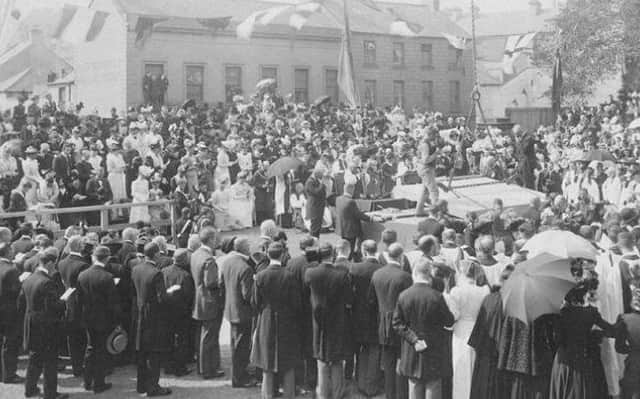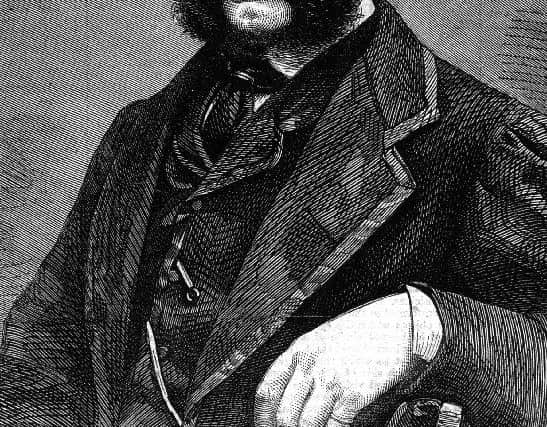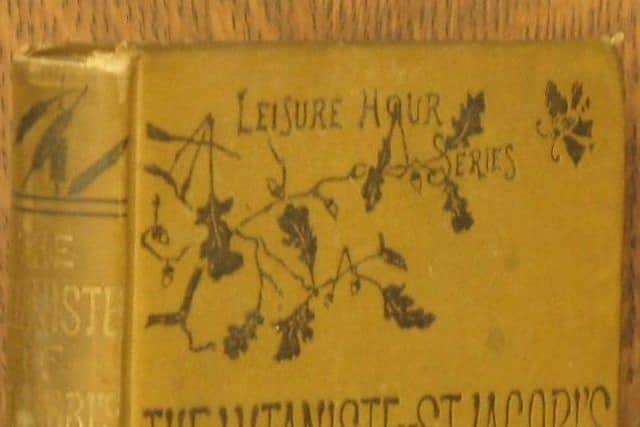Designer son and writer daughter of famous fiery preacher


Those were Church of Ireland clergyman Rev. Dr Thomas Drew’s opening words to a congregation of Orangemen in Belfast’s Christ Church on the 12th July 1857.
Rev. Drew’s fiery oratory continued “let legislators and rulers, judges, and administrators of a merciless inquisition, for once listen to the benign precepts of Him who made them; of Him who knows their every secret thought; and who will soon - it may be very soon - call them to an irreversible judgement!”
Advertisement
Hide AdAdvertisement
Hide AdThe News Letter reader who recently introduced us to Captain Francis Fowke, the Ballysillan-born architect of London’s Albert Hall, has sent another e-mail to Roamer’s mailbox, mentioning Rev Drew’s connection with architecture!


“He was rector of Christ Church, now part of Inst.,” the e-mailer explained, adding “the Drew Memorial Church on the Grosvenor Road was called after him. It is now closed due to the fall of the Protestant population in area... and he was a big-wig Orangeman.”
Anyone interested in the history of Protestantism and the Orange Order will know about him, but the e-mailer continued “there are at least two more stories for Roamer!”
Dr Drew’s son, also called Thomas, was the highly acclaimed architect of some of Ireland’s most iconic buildings including Belfast’s St Anne’s Cathedral, and his daughter Catherine was a prominent author, journalist and children’s charity worker who became the London correspondent for the News Letter!
Advertisement
Hide AdAdvertisement
Hide AdI have only a little biographical material at the moment about the Rev. Dr Thomas’s extremely illustrious off-spring but I’ll find out more in the near future.


Meanwhile, News Letter readers are invited to share any information they may have about them by sending it to Roamer’s mailbox.
Thomas junior was born in Belfast on 18 September 1838 and whilst he was knighted for his many architectural achievements in 1900, the Dictionary of Irish Architects notes “considering Drew’s importance and success as an architect, surprisingly few drawings by him are known to have survived.”
After school, young Thomas was articled to Charles Lanyon in 1854, one of the city’s most famous and prolific architects, designer of the main Queen’s University building, the Palm House in Belfast’s Botanic Gardens, Crumlin Road Gaol and Courthouse and the Belfast Custom House, to mention but a handful of Lanyon’s masterpieces.
Advertisement
Hide AdAdvertisement
Hide AdIt was reported when Drew was awarded his knighthood that the “splendid opportunities for the acquisition of knowledge” offered in Lanyon’s architectural practice were increased when William Henry Lynn joined the partnership, who “completed the development of his (Thomas’s) powers.”
Lynn also worked on the Cathedral, Queen’s College, Carlisle Memorial Methodist Church, the (then) Belfast Bank on College Green, Dublin, and Belfast’s Central Library, Bank Buildings and Campbell College.
Between 1858 and 1861 Thomas Drew acted as Lanyon’s superintendent architect and clerk of works, before moving to Dublin in 1862 to work with William George Murray.
The “uncommon talents” of the “rising young architect” were soon noted in the Irish Builder magazine.
Advertisement
Hide AdAdvertisement
Hide AdDrew remained Murray’s chief assistant until 1867, when he began practising alone without partners.
Church architecture was Thomas’s main interest throughout his career, culminating in his design for St Anne’s Cathedral, Belfast where the foundation stone was laid on 6 September 1899.
It was built on the site of the previous St Anne’s Church.
Thomas Drew was also consulting architect for Christ Church Cathedral, Dublin; St Patrick’s Cathedral, Dublin; Armagh Protestant Cathedral and St Columb’s Cathedral, Londonderry.
Advertisement
Hide AdAdvertisement
Hide AdHe was responsible for the restoration of Holy Trinity Cathedral, Waterford, and in England his advice was sought on the subject of cracked nave pillars at Truro Cathedral.
He was evidently a man of immense energy and not only was he President of the Royal Society of Ulster Architects from 1901 to 1903 but in addition he was President of the Royal Institute of the Architects of Ireland; of the Royal Society of Antiquaries of Ireland; of the Royal Hibernian Academy
and he also held the chair in architecture at the National University of Ireland.
He also wrote for the Irish Builder magazine and was its editor for a while.
Advertisement
Hide AdAdvertisement
Hide AdHe enjoyed sketching and measuring old buildings and exhibited his architectural drawings in Ireland, Britain, France and Belgium.
Drew was awarded a knighthood in Queen Victoria’s birthday honours for 1900 and was one of five architects invited to submit designs for her memorial in London.
He died on 13 March 1910 and was buried in Deans Grange Cemetery, County Dublin.
There’ll be more on this page soon about Sir Thomas, and about his aforementioned sister Catherine who worked for the News Letter.
Advertisement
Hide AdAdvertisement
Hide AdShe was born on 27 May 1832 in Broughshane where Rev. Thomas Drew was a curate.
Catherine probably began her journalistic career writing for the Irish Builder, which her brother worked for, and after local articles in the News Letter she went to London in 1871 as its London correspondent.
She was a founder member of the Ladies’ Press Association, an instigator of The Orphan Fund and author of novels, the best known are ‘Harry Chalgraves’s Legacy’ and ‘The Lutanistes of St Jacobi’s.
Comment Guidelines
National World encourages reader discussion on our stories. User feedback, insights and back-and-forth exchanges add a rich layer of context to reporting. Please review our Community Guidelines before commenting.